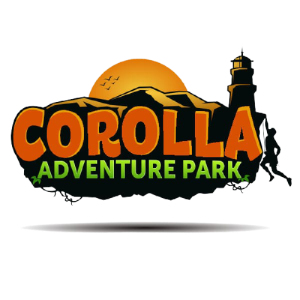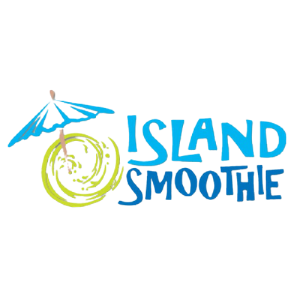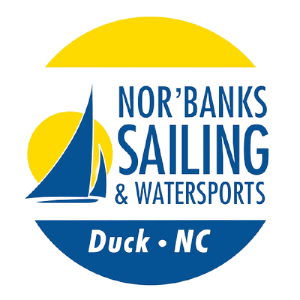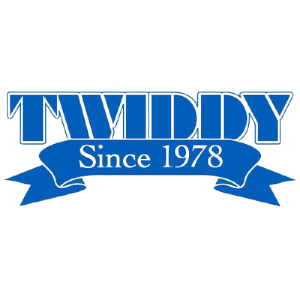5 TIPS ON PREPARING FOR YOUR WILD HORSE ADVENTURE TOUR
- Arrive 30 minutes early! This policy allows you the time to check in, sign waivers, and prepare for your 2-hour, non-stop ride. We operate on a tight and timely schedule and cannot hold tours!
- Check your email! The confirmation emails you receive after booking are very important. You can double-check and reference your booking information to avoid any booking mistakes. Didn’t receive your email? Call us to have it resent! 252-489-2020
- Find us! Locate our office on a map before you start your drive. Although the island is small, some people still get lost or rely on a faulty GPS! We cannot delay our tours, so arriving in the right place, at the right time, is important!
- Inform us! Do you have mobility issues, or maybe don’t have the best hearing? Make a note in your booking of anything that may be helpful for us to know so we can provide you with the best adventure possible!
- Read the FAQ! The information below is extremely helpful in further preparing for your adventure.
Tour FAQ
-
Car seats are legally required in order for children to take a tour if they are under 8 years old or 80 pounds. There are no age restrictions to take a tour, however, children cannot sit in a parent’s lap; you must bring their car seat. All of our vehicles are equipped with the latch system in order to provide a safe and stable tour for the young ones! (Plus, being raised up makes horse viewings easier for smaller children).
-
If they are a registered service animal, you are more than welcome to bring her or him with you! Just let us know at the time of booking so we can make sure there is enough room. If he or she is not a service animal, we kindly ask you to leave them at home.
-
Yes, we do require reservations and pre-payment to book a tour. As soon as you decide you want to take a tour, book online or give us a call; we book up fast!
-
We do not guarantee that you will see horses, as they are wild animals and are not tagged. However, our tour guides are well trained and know where to look for the horses depending on the time of day and weather conditions. Feel free to give us a call and ask about recent horse activity.
-
Thanks to you, our company is able to participate in many programs that aid and protect the horses and the land they call home. Each ticket you purchase allows us to make regular and yearly donations to the non-profit responsible for herd management, Corolla Wild Horse Fund. We also are able to make emergency donations in order to aid hurt or sick horses who need to be removed for veterinary treatment. In addition to our micro-level impact, through company profit, we purchase sections of land to shield the sanctuary from development and minimize human impact. Donations are also made to the National Forest’s tree planting program in order to offset our vehicles’ carbon footprint. All of this and more is done from you taking a tour with us, we can’t thank you enough!
-
Tours are approximately 2 hours long including travel time to and from the beach. The meeting point is at our office. In addition to this, we require you to be here 30 minutes before your scheduled tour time.
-
If at the end of your tour you feel you have had an exceptional experience and your tour guide has provided exceptional service, then it’s customary to provide a personal “thank you” in the form of a gratuity.
-
No, there are no formal restroom stops during the two hours. Please use restrooms located at our office prior to departure.
-
We do not suggest anyone who is pregnant take our tour. Although we try to provide the smoothest ride possible, this is an off-road excursion with varying driving conditions. We ask for you to consult your doctor and do require you to sign an additional waiver if you decide to participate in our tour.
-
We are a rain or shine company! If the horses don’t mind the rain, ‘neighther’ do we! Since the Outer Banks has varied weather and spans a large area, a weather forecast that predicts rain in the Outer Banks does not necessarily mean it will rain in Corolla. If you are concerned about the weather for your tour please call us at (252)489-2020. We will not send out tours during severe thunderstorms, strong winds, and/or heavy rain, as this could endanger you and our drivers. These tours will be postponed, rescheduled, or refunded based on availability and preference.
-
There is no best time! Although searching for wild animals is an unpredictable feat, our guides are extensively trained on tracking the wild mustangs. It’s recommended that you choose the date and time of the day for your tour based on your party’s preference. Good news is, since it is illegal to feed the wild horses, their search for food keeps them on the move from sun up to sun down.
-
We are located in the town of Corolla, the northern end of the OBX. Click here for directions.
-
Depends on what you are looking for! We suggest Lighthouse Bagels and Deli, Corolla Cantina, and Mama Easley’s for places in Corolla. If you are driving back south, Cravings and Roadside in Duck are top-notch food joints! Activities-wise, the Corolla Beach lighthouse is right up the road neighboring a free wildlife museum. Also, Corolla Adventure Park is a ropes/obstacle course up the road that is a hit among kids and their families! Feel free to give us a call for any local suggestions.
-
Yes, for the best in Outer Banks Vacation Rentals we recommend Twiddy & Company.
-
From stem to stern, north to south, the Outer Banks of North Carolina is made up of 10 small towns, starting north: Corolla, Duck, Southern Shores, Kitty Hawk, Kill Devil Hills, Nags Head, Manteo, Rodanthe, Waves, Salvo, Avon, Buxton, Frisco, Hatteras, and Ocracoke.
-
Corolla is known for its miles of beaches, as well as its array of restaurants, shops, and historic attractions. Corolla is also the home of several popular Outer Banks attractions, including the Currituck Beach Lighthouse, the Whalehead Club, the Outer Banks Center for Wildlife Education, and the Wild Horse Museum. Most of all, Corolla is home to about 100 Banker horses. They are located on a 12,000-acre (49 km²) animal sanctuary situated north of the populated areas of Corolla. Over fifty thousand people come to see these wild horses every week in the summer months.
-
Corolla is an unincorporated community located in Poplar Branch township, Currituck County, North Carolina along the northern Outer Banks.
Horse FAQ
-
Mustang is the free-roaming horse of the American west that first descended from horses brought to the Americas by the Spanish. There are many other breeds of wild horses that have ancestors distinct from the mustangs.
-
No. Clydesdales are very lazy horses, and they eat a lot. They were specifically bred to pull heavy loads, not to carry weight or run fast. Though, like any other horse breed or individual horse, with the right mental training and time to develop the important muscles for carrying weight (as opposed to pulling it, in this case), they can make excellent ridden horses.
-
Hunting is prohibited by law. The horses have truly been protected by the efforts of local people and the Corolla Wild Horse Fund. The free-roaming horse population of the US is managed by the Bureau of Land Management (BLM).
-
No, there are no truly wild horses in England. However, there are herds of free-roaming ponies that live in wild conditions in various protected areas, such as The New Forest, Dartmoor, and Exmoor.
-
Horses are not predators. The only case in which they become a threat to humans is when they feel that you are a threat to them. Even if they feel threatened, their first instinct is to evade the danger.
-
The early wild horse was native to North America, but it got extinct. Current wild horses in America came from Spain in the 15th century. Ships sailing for the New World had to bring with them a certain number of stallions and mares. Most likely the Banker horses we know today are descended from Spanish horses that were bred in Central and South America, as modern science indicates with the presence of genetic marker Q-ac.
-
Horses can attack. Generally, equines are fairly peaceful and don’t start fights, but will defend themselves if threatened or frightened.
-
They do not drink brackish or saltwater. The average horse will intake 5 to 10 gallons of freshwater per day.
-
The horses we see today and their original ancestors are technically not native to North America. Similar to equine species that were native to North America, their original ancestors went extinct along with some other ancient mammals during the ice age. In 1493 on his second voyage to the Americas, Columbus brought Spanish horses to the Virgin Islands, and, in 1519, they were reintroduced on the continent, in modern-day Mexico. From there they spread throughout the American Great Plains, either escaping from their owners or by being stolen by thieves.
-
Coyotes are more of a threat to foals, as they are reluctant to attack a full-grown horse except out of desperate hunger, and even then, they do so in large packs.
-
If you get too close to the horses and they feel threatened enough for their fight-or-flight response to be triggered. They may defend themselves by charging, kicking, or biting. If you see any of the following, stay away: swishing tail (irritation), pawing (frustration), stamping (irritation/frustration), ears pinned flat (anger/aggression), white eyes (anger/fear).
-
Horses are herd animals, most of them really appreciating company, even if it is not a horse (a goat, donkey or another small animal may work).
-
Horses not only remember people who have treated them well, but research shows they also understand words better than expected.
-
They do, but little is currently known about the migration patterns of wild horses. The GPS collars are the latest in wildlife tracking technology and will allow the researchers to get real-time information on the animals via a satellite.
-
Wild horses, and their cousins like zebras and wild donkeys, do not need shoes even though they often live in harsh, punishing, rocky environments. They were formed by natural evolution and natural selection made sure their feet can sustain the harsh environment they live in.
-
Wild horses have been a part of the Canadian west for hundreds of years. There are currently wild horses living in the Chilcotin region of British Columbia and parts of Saskatchewan, including a population of protected wild horses in the Bronson Forest.
-
Horses in the wild don’t need their hooves trimmed because they wear them down walking around all day long. Domesticated horses need their hooves trimmed because they are kept confined and well-fed, making it unnecessary for them to travel long distances in search of food and water. Because of that, their hoof growth outpaces the rate at which they can wear them down on their own.
-
Horses are much better adapted to the cold weather than we give them credit for. They grow an excellent winter coat that insulates them and keeps them warm and dry down to the skin.
-
They often cover 10-20 miles in a day, just to meet their needs for food and water.
-
The largest population of wild horses is in Australia, estimated at around 400,000 horses. The USA has around 75,000-80,000 wild horses, while all other populations around the world are significantly smaller. It is very hard to estimate the total number of wild horses.
-
There are approximately 100 Corolla Wild Horses, also known as Banker horses, on the northern Outer Banks.
-
The mustang population is under strain. There are 67,000 wild horses on some 27 million acres of federally managed land. As recent as 2005, there were more than 80,000 mustangs.
-
Yes, feeding wild horses is prohibited by law in most states they live in. Over the years several horses have died as a result of being fed by humans. Even food that domestic horses can usually tolerate, like apples and carrots, can be harmful to the wild horses. When they ingest apples, carrots, or other non-native foods, they are at great risk for painful colic at best and death at the worst.
-
Depending on their ancestors, there are many breeds of modern wild horses. Some of them are:
- Banker horse on the Outer Banks of North Carolina
- Brumby, the wild horse of Australia
- Garrano, a wild horse native to Portugal
- Misaki horse in Japan
- Mustang in western USA
- Kaimanawa horse from New Zealand
- and many more!
-
Wild horses eat a very specialized diet of sea oats, coarse grasses, acorns, persimmons, and other native vegetation.
-
Ears automatically pin back whenever the horse feels particularly threatened or angry. When a horse is mad, the whites of its eyes may be visible and the teeth are usually showing. When a horse’s ears are back, it can also mean that the horse is concentrating.
-
Thoroughbreds are considered the fastest horses in the world and dominate the horse racing industry, while Arabian horses are known to be intelligent and excel in endurance riding. Quadruple the length and the Arabian beats the Thoroughbred. Quadruple the length one more time while most Western Mustangs (wild horses) beat the Arabian.
-
Secretariat, an American Thoroughbred racehorse, in 1973, was to become the first Triple Crown winner in 25 years. The fastest horse on dirt from 1 3/16 to 1 5/8 miles in history. Although Quarter Horses, American breed of horse that excels at sprinting short distances, attains higher speeds over shorter distances than Thoroughbreds.
-
Very small, in the case of the USA, it is around 10% or less. The horse population in the US is more than 10.31 Million and the number of wild horses is around 80,000.
-
When talking about the USA, wild horses can be found in North Carolina, Maryland, Virginia, Arizona, California, Colorado, Idaho, Montana, Nevada, New Mexico, Oregon, Utah, and Wyoming. In most of these states, wild horses populate so-called Bureau of Land Management (BLM) Herd Management Areas as well as territories under the management of the United States Forest Service.
-
The researchers have traced the origins of horse riding back to the Botai Culture of Kazakhstan circa 5,500 years ago.
-
Australia has the largest population of wild horses in the world, their number exceeding 400,000. There are also isolated populations of wild horses in a number of other places, including Sable Island off the coast of Nova Scotia, Portugal, Georgia, Bosnia and Herzegovina, India, North Carolina, etc.
-
Most of the mustang populations are found in the Western states of Montana, Idaho, Nevada, Wyoming, Utah, Oregon, California, Arizona, North Dakota and New Mexico. Some also live on the Atlantic coast and on islands such as the Sable, Shackleford, Assateague and Cumberland Islands.
-
Nevada is home to more than half of the wild horse populations in North America.
-
Despite an apparent absence of horse remains between 7000 BC and 3500 BC, there is evidence of its presence in Britain after it became an island separate from Europe by about 5,500 BC.




